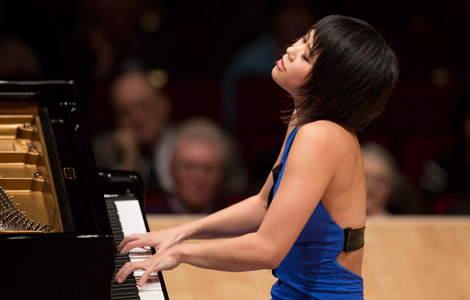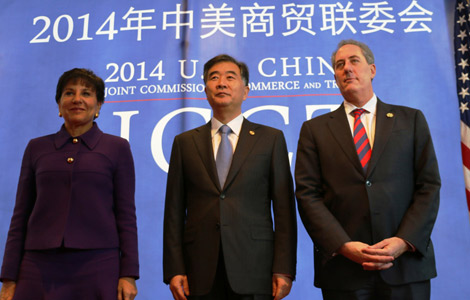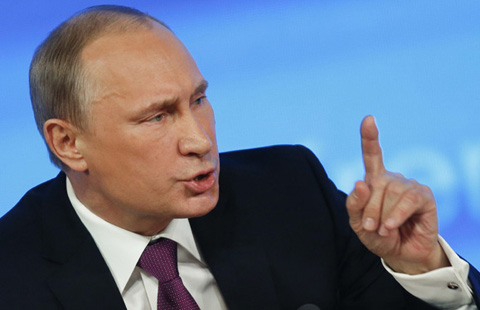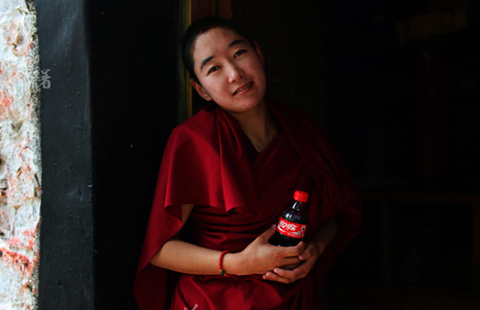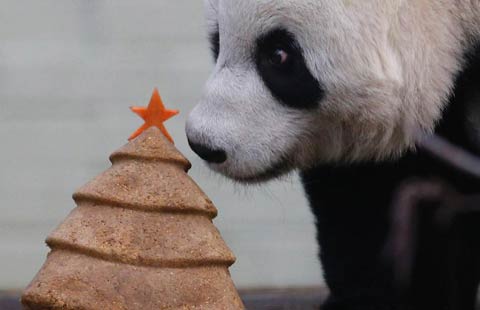Charting new cultural horizons
Updated: 2014-12-20 01:55
By LI NA in Toronto(China Daily Canada)
|
||||||||
Fang Li, the Chinese consul general in Toronto, became more well known for his singing in a Toronto flash-mob video chorus featuring popular Chinese songs, as the two-minute news clip on the event has gotten more than 77,900 hits on You Tube.
"I am so happy to join the flash mob chorus; it's a good way to encourage the cultural exchanges between China and Canada."
Fang recently discussed the Chinese Culture Series Project in Canada with China Daily.
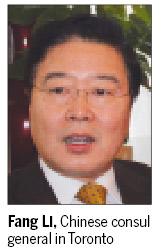
The two-year series concluded in November, marked by a performance by the National Center for the Performing Arts' orchestra band.
The series has brought music, dancing, opera and exhibitions to Montreal, Ottawa, Toronto, Vancouver and other cities in Canada.
Top Chinese art institutions including the National Ballet of China, the Palace Museum and the China Broadcasting Performing Arts Group also have taken part. Local art groups and the general consulate in Toronto also have participated.
"Toronto is the third-largest city in North America, as well as Canada's center of economy and culture," Fang said. "Half of the 1.4 million Chinese living in Canada are residing in Toronto, and we have some of the most enthusiastic art lovers of the country. So, Chinese culture activities in this city could well reflect the Chinese Culture Series in general."
There have been many highlights in the past two years since Prime Minister Stephen Harper's visit to China in 2012, which brought two giant pandas to the Toronto Zoo for the first time in 28 years and caused a "China fever" in Canada.
The pandas Da Mao and Er Shun brought happiness to Canada and also greetings from the Chinese people. They are regarded as symbols of peace and friendship between the two countries.
Another highlight is the "The Forbidden City: Inside the Court of China's Emperors", an exhibition co-presented by the Palace Musuenm and the Royal Ontario Museum (ROM). More than 200 national treasures from Beijing — some traveling outside China for the first time — attracted 200,000 to ROM from March to September.
During the China Now festival at Toronto's Harbourfront Center in July, nearly 80 artists, craftsmen and inheritors of intangible cultural heritages from China demonstrated Chinese folk culture together with artists in Canada, which attracted dozens of thousands of visitors.
"The successful activities tell us again that culture has no boundary," said Fang, a diplomat for 36 years. "Good art work is the most touching language, and can be appreciated wherever it is."
Both Canada and China are multicultural societies. China is officially composed of 56 ethnic groups; Canada lists more than 100 ethnic groups. During the Canada China Tibetan Culture Week in November, Canadian audiences were treated to thrilling song and dance performances by the 60-plus-member Tibetan Lhoka Art Troupe.
"Lots of Canadian friends were surprised that Chinese minorities have such colorful and beautiful costumes and cultures," Fang said, referring to a fashion show two years ago.
The intimacy between two peoples lies in the mutual understandings, Fang explained. "So culture is the bridge of communication between the two countries."
There is potential for more cultural exchanges. When Harper visited China in November, the two sides proclaimed 2015-16 as Canada-China Cultural Exchange Year.
"With the conclusion of the Chinese and Canadian Cultural Series and the start of the China-Canada Cultural Exchange Year, there would be a new horizon for the cultural exchanges between the two countries," Fang said.
Lu Huiquan in New York contributed to this story.
renali@chinadailyusa.com
Most Viewed
Editor's Picks
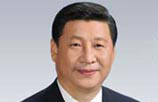
|

|

|
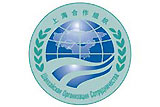
|

|
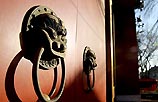
|
Today's Top News
China, US get things done at trade talks
JD.com adds Gap clothes online
California city fights 'birth tourism'
China OKs modified corn imports
Build, not break, a bridge for people
Chinese city shops for talent in Houston
Cleaner coal goal in deal by Houston firm
China niche for California design firm
US Weekly

|

|
